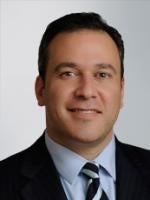Before closing the book on 2022, we look back at the most significant verdicts issued in trade secret trials this past year. In 2022, several juries awarded extraordinary verdicts to plaintiffs. These verdicts suggest a growing trend in damages theories and illustrate the importance of expert testimony in both the prosecution and defense of trade secret misappropriation cases. The cases also highlight considerations related to the scope of the definitions of trade secrets alleged starting at the outset of a case. For companies pursuing or defending against trade secret actions in 2023, looking to these verdicts and the theories that helped persuade a jury or judge can help guide strategy from the outset of the case through trial.
-
Sky-High Verdicts Reveal a Growing Trend in Damages Theories
2022 saw substantial verdicts in trade secret actions across various industries. Most noteworthy was the verdict in Appian Corp. v. Pegasystems Inc., No. 2020-07216 (Va. Cir. Ct. Fairfax Cty. May 9, 2022), in which the jury awarded a staggering $2 billion in favor of plaintiff Appian for the misappropriation of trade secrets in violation of the Virginia Trade Secrets Act and Virginia Computer Crimes Act, in addition to willful and malicious misappropriation.
Appian alleged that Pegasystems conspired with a former Appian employee who possessed a copy of Appian’s software to disclose the former employee’s knowledge of the software. Pegasystems then used the information to create its own product to compete with Appian. Appian presented evidence that Pegasystems had used an individual they referred to as “our spy” to glean secrets from a trial of Appian’s software.
Other sizable trade secrets verdicts from 2022 include:
-
Versata Software Inc. v. Ford Motor Co., No. 2:15-cv-10628 (E.D. Mich. Oct. 26, 2022), in which the jury awarded Versata Software $105 million for its breach of contract and misappropriation of trade secrets claims against Ford Motor Co. on the theory that Ford had misappropriated software developed by Versata utilized in managing how Ford vehicles are assembled;
-
Coda Development SRO v. Goodyear Tire & Rubber Co., No. 5:15-cv-1572 (N.D. Ohio Sept. 19, 2022), in which the jury awarded Coda Development $64 million for the misappropriation of trade secrets involving self-inflating tires after Coda Development and Goodyear had discussed a potential collaboration;
-
Comet Technologies USA Inc. v. XP Power LLC, No. 20-cv-06408 (N.D. Cal. Mar. 23, 2022), in which Comet Technologies was awarded $40 million for the misappropriation of trade secrets related to the manufacture of semiconductor chips, which Comet alleged occurred after XP hired away Comet employees who were aware of the proprietary technology; and
-
Epic Systems Corp. v. Tata Consultancy Services, Ltd., No. 14-cv-748 (W.D. Wisc. July 1, 2022), in which Epic Systems was awarded $940 million for the misappropriation of its trade secrets. The company had also introduced evidence that a Tata Consultancy employee had used fraudulent credentials to download information from Epic Systems’ proprietary systems. The verdict was ultimately remitted to $280 million following the resolution of Tata Consultancy’s appeals.
These verdicts may be a harbinger of rising damages awards levied by juries for claims of trade secret misappropriation.
On top of their size, what is particularly noteworthy about some of these verdicts – especially the Appian Corp. and Comet Technologies verdicts – is that the jury relied on a particular unjust enrichment theory to award damages, a theory that is available under the Defend Trade Secrets Act (“DTSA”) and some state statutes. This theory focuses on avoided development costs.
Indeed, over the past year, courts have increased recognition of this remedy. Companies often spend years and thousands or even millions of dollars developing their trade secrets. When these trade secrets are stolen, either by a former employee or trusted contractor or vendor, the question often arises whether the misappropriating party can be held liable for the trade secret owner’s sunk costs of creating and developing the trade secrets. The answer varies by jurisdiction, but courts increasingly have said “yes.”
The DTSA allows for “damages for any unjust enrichment caused by the misappropriation of the trade secret that is not addressed in computing damages for actual loss.” 18 U.S.C. § 1836(b)(2). The Uniform Trade Secrets Act (“UTSA”), which has been adopted in every U.S. state except New York and North Carolina, includes nearly identical language, allowing damages for “the unjust enrichment caused by misappropriation that is not taken into account in computing damages for actual loss.”
Unjust enrichment in the context of trade secret misappropriation is often called “avoided costs” – i.e., the costs that the misappropriator has avoided by taking the completed trade secret. Under this theory, parties found liable for trade secret misappropriation would be liable for costs they “avoided” by misappropriating the trade secret in lieu of developing the trade secret themselves. Wide acceptance of the “avoided costs” remedy would add more teeth to an area of law in which actual damages have been difficult to prove.
It would be premature to say that courts across the United States have widely recognized the avoided costs theory of recovery. However, the theory is gaining traction. For example, in Appian Corp., Appian promulgated only this unjust enrichment theory of damages in the trial, which Pegasystems countered by asserting that it had not been profitable during the relevant time period and, therefore, had not been unjustly enriched. Given the verdict’s size, the jury appeared to reject Pegasystems’ argument.
A similar theory was promulgated in Comet Technologies, in which Comet Technologies obtained damages under an unjust enrichment theory that XP had a “head start” in developing equipment used to manufacture semiconductor chips.
In addition, a district court in California recently indicated its acceptance of the remedy. In MedImpact Healthcare Sys., Inc. v. IQVIA Inc., No. 19-cv-1865, 2022 WL 6281793, at *7 (S.D. Cal. Oct. 7, 2022), the plaintiff was denied “avoided costs” in arbitration over a trade secrets case. However, the district court held that “avoided costs” may still be an appropriate remedy for post-arbitration continuing conduct: “[I]n view of the ongoing nature of the alleged misappropriation, unjust enrichment may still a viable theory of damages under the DTSA and CUTSA for post-arbitration conduct.”
In a separate ruling in the same case, the court noted that “[t]he Ninth Circuit has not yet ruled on whether avoided costs are available as damages for unjust enrichment under the DTSA but other jurisdictions have recognized that avoided costs of developing a trade secret are recoverable for unjust enrichment under the DTSA and state law counterparts.” MedImpact, 2022 WL 5460971, at *5.
The court pointed to cases in other jurisdictions, such as GlobeRanger Corp. v. Software AG United States of Am., Inc., 836 F.3d 477, 499 (5th Cir. 2016) (“The costs a plaintiff spent in development … can be a proxy for the costs that the defendant saved”), and Syntel Sterling Best Shores Mauritius Ltd. v. TriZetto Grp., Inc., No. 15 CIV. 211 (LGS), 2021 WL 1553926, at *6 (S.D.N.Y. Apr. 20, 2021) (“Avoided costs damages are proper under the DTSA as a matter of law.”).
Although unjust enrichment verdicts are often appealed, it is noteworthy that, in November 2022, the U.S. Court of Appeals for the Third Circuit and U.S. Court of Appeals for the Sixth Circuit both upheld multi-million-dollar trade secret verdicts and awards based in part on unjust enrichment theories. PPG Indus. v. Jiangsu Tie Mao Glass Co., No. 21-2288, 2022 U.S. App. LEXIS 24411 (3d Cir. Aug. 30, 2022); Caudill Seed & Warehouse Co. v. Jarrow Formulas, Inc., 53 F.4th 368 (6th Cir. 2022).
Defendants in trade secret misappropriation actions should therefore proceed with caution given that unjust enrichment theories may become increasingly accepted by appellate courts and juries, despite some state courts previously rejecting the theory. See E.J. Brooks Co. v. Cambridge Security Seals, No. 26, 2018 BL 157167 (N.Y. May 3, 2018) (holding that compensatory damages for misappropriation of trade secrets are limited to the plaintiff’s losses and do not include development costs saved by the defendant or additional damages for unjust enrichment theories).
Even with the split in authority that exists now, the increased acceptance of the “avoided costs” remedy is likely to be accompanied by an increase in litigation surrounding the methods for calculating these costs. Research and development costs are rarely finite or easily calculable, and it may be difficult to attribute particular costs to particular trade secrets. The difficulty and cost in litigating over this issue can be mitigated if businesses retain records accounting for the research and development costs for their most valuable trade secrets.
-
Litigants in Trade Secret Matters Should Consider Utilizing Expert Testimony for Damages Calculation
It is often the case that, due to the complexity of damages calculations, litigants in trade secret matters rely upon expert testimony. Indeed, experts in misappropriation cases involving unjust enrichment often assist by providing testimony comparing any benefit conferred by the alleged misappropriation versus what might have occurred if the defendant had acquired the trade secret through lawful means.
Trade secret verdicts from 2022 provide a reminder of the potential importance of such testimony and its possible impact on a jury, as expert testimony helped lead to some of the largest verdicts in 2022.
For example, in the cases cited above that relied on an unjust enrichment theory, expert testimony regarding the costs saved by the defendants ultimately helped establish the damages to be appropriately proportioned based on the unjust enrichment. In Comet Technologies USA Inc. v. XP Power LLC, Comet’s expert witness testified that unjust enrichment damages should be measured by looking at the cost the defendant had saved because the defendant’s products would be introduced in the future. No. 20-cv-06408 (N.D. Cal. Oct. 28, 2022). The jury credited this explanation, as it awarded Comet $20 million in unjust enrichment damages (as well as $20 million in punitive damages).
-
Changing the Definition of Trade Secrets Throughout Litigation May Compromise a Plaintiff’s Case
An important decision for a plaintiff filing a trade secret matter is how narrowly to define the trade secrets in the complaint. While plaintiffs are often hesitant to waive potential claims and unnecessarily narrow the scope of the matter, failing to identify trade secrets with sufficient specificity can put claims at risk of early dismissal. See, e.g., You Map Inc. v. Snap Inc., No. 20-cv-162, 2021 WL 106498 (D. Del. Jan. 12, 2021), report and recommendation adopted, No. 20-cv-162, 2021 WL 327388 (D. Del. Feb. 1, 2021) (“There are at least two problems with Plaintiff’s current position. The first is that Plaintiff must adequately identify the trade secrets in the Complaint. If the claimed trade secrets are source code or software algorithms (or something else entirely), Plaintiff needs to specify that in the Complaint. The second problem is that Plaintiff’s failure to adequately identify the trade secrets renders the Court unable to determine if the Complaint plausibly alleges that Defendants misappropriated them.”).
However, one verdict from 2022 flagged another potential risk to plaintiffs in failing to sufficiently narrow the trade secrets at issue in a misappropriation claim. In Masimo Corp. v. True Wearables, Inc., No. 8:18-cv-02001 (C.D. Cal. Nov. 7, 2022), the court found after a bench trial that a former executive had misappropriated trade secrets and used them in products of his new company in violation of the California Uniform Trade Secrets Act. But in assessing whether an award of attorney’s fees was appropriate in light of the ruling, the court found that the plaintiffs “drove the trajectory of this case in a manner that required both parties to spend a significant amount on attorney’s fees as they prepared for trial. Over three years after the case was filed, at the time of trial, Plaintiffs had whittled their intellectual property case down to a handful of trade secrets and a single patent claim. Further, Plaintiffs prevailed on only a select number of their misappropriation theories, and did not prevail on their patent infringement claim. Against this backdrop, the Court [found] it would be inequitable to award Plaintiffs attorney’s fees.” Id. at 66.
The Masimo ruling serves as a caution that plaintiffs who fail to sufficiently define the trade secrets at issue at the outset of a case or who change or narrow the definition of the trade secrets throughout litigation may jeopardize their ability to obtain attorneys’ fees under the various trade secret statutes after a verdict is rendered. Before proceeding to court, putative plaintiffs should carefully consider the benefits and drawbacks of the definitions of the trade secrets included in a complaint.







 />i
/>i

